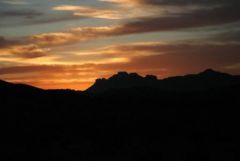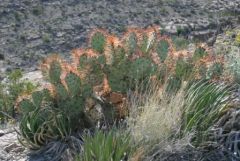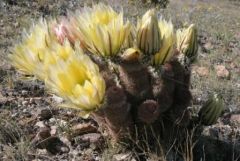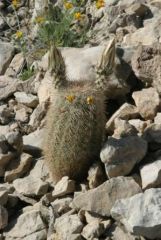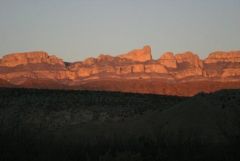-
Content Count
2713 -
Joined
-
Last visited
-
Days Won
44
Content Type
Profiles
Forums
Blogs
Gallery
Everything posted by tbutler
-
Welcome NF: As above, please give us the manufacturer and model and year of coach. Let us know also the slide, front/rear, driver side/passenger side. As I understand it various manufacturers have different instructions for extending slides. We have two slides and each has a different method for moving the slide and each has a different system for adjusting the slide out. I had mine adjusted at a service center several years ago and watched/participated in the process. Now I know what to do on my own. If you have to take your coach in to have the adjustment made, ask to watch the process so you can see how it is done. Think of it as going to RV tech school! If you have a shift of the slide it indicates some failure of the slide out mechanism or a serious adjustment issue. Once we know the exact details of your coach, we should have someone on line who owns or knows a similar coach and can give you some help.
-
Matt, I was checking to see if you found a solution to your problem. Those of us who offer solutions would enjoy hearing what the actual solution to these problems is as it helps us learn from your experience. I'm not so much interested in being right or wrong, just want to know what broke and how it was fixed. One other possibility occurs to me. The pop you heard could have been the switch shorting out. The switch may also be a cause if the motor is not running at all.
-
I am very happy with our insurance from GMAC. They have full timers insurance that covers contents and liability in campgrounds as well as the usual auto and motor home vehicle insurance. Their motor home insurance includes replacement value for motor home and toad. We've had several claims and they have always been most efficient and have paid fairly in each case. We get a person assigned to our case immediately and they are very responsive in handling our claims. All this is done via the phone and internet (send photos of damage) which might suggest an impersonal approach but we've never felt we got anything but the best service.
-
Kids and motor homes are made for each other! Can't beat the fun you can have with both. Bet you're glad you aren't at Virginia Beach tonight! Hope the campground doesn't suffer too much damage. Always enjoy your blog entries! Thanks. Tom
-
Was the popping noise an electrical pop like a short or was it a pop like something breaking? When you activate the switch do you hear the motor running or is there only silence? If the motor runs but the slide doesn't move, I would look for a keyway or shear pin on the drive shaft. It is basically a safety feature to keep the motor from being overloaded. If the resistance is too great, the keyway or shear pin will break and this keeps the motor shaft engaged in the shaft that turns the screw to move the slide out. This has happened to a friend of ours with the rear slide on his Windsor. He found a suitable substitute at Home Depot and then got the proper size later from Monaco. He gave me one to keep in case I had the same thing happen. I keep my slide out well lubricated and haven't had a problem yet... This is how the Windsor slide outs work, I don't know about La Palma. If the motor doesn't run when you activate the switch, then I would look for an electrical short though that should have blown a fuse. The slide out motors are 12V motors so it isn't a circuit breaker but instead it will be a fuse. Check in the bedroom 12V fuse box and in the fuse box under the drivers side window for a multitude of other 12V fuses. They are all clearly labeled. If you replace the fuse and it blows again then you have a more serious problem and need to find the short to fix your problem. Of course there could always be something like a piece of your personal gear that slipped under or between the wall and the slide out and is jamming it. Examine the slide out around all edges, sides, bottom and top, both inside and outside to look for something which might be wedged into the space between the slide out and another surface. A final possibility I can think of is a possible failure of the mounting for the motor, breaking loose from its mounting or a failure of the mounting of the track where it attaches to the slide out. Either would result in a failure to move. Most RV parks have service people on their quick call list. If you are in an RV park, check with the office in the morning and get a recommendation for a mobile repair service. If you are on the road somewhere, consult the Family Motor Coach RV Marketplace online service directory or, if you have the Trailer Life or Woodall's Campground Directory, look for nearby service centers for help.
-
Alamo Fiesta RV Park in Boerne was one of the first stops we made in 8 years of full timing. The park is welcoming, has nice facilities. It is close enough to San Antonio (which is a fantastic city to tour/visit) and is in the heart of the hill country to make this an ideal destination. The rates are in the $30 to $40 range. Nearby are the WWII Nimitz Museum in Fredericksburg, the dance hall in Gruene, all the German communities of the hill country, and the Lyndon Johnson Presidential Ranch near Johnsonville. Austin is within reach but you may want to move there to explore that area. The state capital in Austin is worth a visit and if you enjoy the city life there are dozens of great restaurants and things to do there as well. In Austin (on I-35) we have stayed at La Hacienda RV Park in Lakeway, Texas, on the outskirts of Austin. We found San Antonio too cold for our tastes (recently retired from Missouri) in December but February is a whole different animal. When I moved from Missouri to San Antonio in January 1969 when I was in the military everyone in the apartment complex thought I was crazy to go in the swimming pool but I thought it was a trip! Hey, it wasn't frozen over like every pond in Missouri! We love the "Hill Country" and stop there frequently on our way into and out of Texas.
-
I had GS and they gave me the same run-around. We had a flat that ruined the rim. All they were concerned about was getting me on a tire that I could drive away with. A rim and tire that I couldn't use would have cost me $700 and that was their solution (period). I paid to have a company come in and bring me the proper tire size on a rim that would have to be replaced. I came out way ahead. In this case, no company was better than what they offered. The emergency people are concerned with minimizing their costs. There are likely circumstances where this solution is the best, but I'm not so sure. Their solution is a tow to the nearest place where you can get service. Their cost trumps your cost. I had a broken oil line to the turbocharger in the mountains in California. It took much negotiation to get Coach-Net to tow us to a repair center. Another 100 miles and I could have had warranty service with Cummins but -- no -- they would pay for the nearest service where I would have to pay for the cost of the service. It doesn't matter who is providing the service, their cost trumps your cost. As far as they are concerned, the cheapest service is what works for them ... I've been pulled from a stuck-in-the-mud situation by both services and they both performed well, service was excellent. In each of the above instances, I felt as if there was a better solution in my interest, but their interest ruled.
-
I posted a rather lengthy piece on Moisture in Your Motor Home several months ago. There is a discussion of dehumidifiers there. You may want to take a look a that thread for some detailed information. If you can find no leak in the fresh water system and the trash can itself isn't leaking, then I would suspect that the floor beneath the trash can is not insulated and this allows that spot on the floor to be cold because the trash can is insulating the floor from above, keeping warm air from reaching it. This could be solved easily by elevating the trash can off the floor. You could suspend it from a cabinet wall or place a short stand beneath it to allow inside air to circulate over the floor and keep it warmed. If you have problems under the trash can, you should also check the walls behind the couch, in the back of cabinets and in other areas where the outside wall of the motor home is not directly exposed to heated indoor air. All these areas could be problems as well. In my article, I listed a number of steps that you can take to reduce moisture in your motor home. Compared to the effectiveness of the steps listed in the article, any dehumidifier will be much less effective in removing moisture from a motor home.
-
We were there in 2007 and stayed at Portal RV Resort. The place was very nice, plenty of space for our rig and toad. We paid $32 a night, you might get better rates for a week. Arches National Park is just a few minutes drive away. Canyonlands National Park is a little further away but easy to get to. If you've got a 4WD you might enjoy the White Rim Drive in Canyonlands, depending on the condition of the road that time of year. We loved the drive from I-70 SW to Moab on Hwy 128. It is slow but beautiful. Your weather in April is likely to be cool. The elevation at Moab is 4000+ feet. We were only there for a few days to see these two national parks so didn't explore much of the town.
-
California is 55 MPH if you have a toad. The toad qualifies as a trailer. Illinois is posted 55 for motor homes. There are other states that may be posted specifically for motor homes but those are two that I encounter frequently. I make it a practice to follow the truck speed limits just because I would rather travel a little slower and I figure I'm a larger vehicle like a truck. I also follow the truck restrictions for left lane that you encounter on some hills and in some cities. I figure if those working guys can slow down and follow the rules, I can too. I too will be in the right lane most of the time. It minimizes the lane changing and makes driving so much more relaxing. The exception would be in city driving. I prefer to be one lane over from the right lane to allow entering and exiting traffic to get on and off without having to maneuver around me and vice versa.
-
Look for the annual buyers guide issue (magazine). Any large book store should have them. I can't remember the exact title but we used it when we were beginning our search. There are only so many things they can compare but it gives you a starting place to do some eliminating and make your search a little more focused. It is also good for listing all the possibilities so you don't overlook one just because you haven't heard of it. We also used the web reference above. It is a paid service I believe but well worth the money spent when you consider the size of the purchase. We felt it made us much more knowledgeable consumers. Their information discusses safety, weight, maneuverability, and lots of other things to consider. As you begin to look at various motor homes, salesmen are also good sources of information. They will emphasize what is good about their product but it does give you something to consider as you look at other motor homes and will help you ask questions.
-
I don't have a macerator toilet but have a macerator on the waste drain that we use when we want a simple hook-up. Even before we had that, we have never hesitated to purchase the soft paper. I prefer Northern, Louise recently picked up angel soft. We use Happy Camper tank treatment and it seems to break down any paper just fine. If you find the paper causing problems there are specific paper dissolving products available at RV stores. The nature of any macerator is to grind up materials and liquify them. It should handle toilet paper with no problems. As Brett said, check the manual for the toilet. If it doesn't mention anything about the kind of toilet paper to use, pick you favorite!
-
Norcold has an ongoing recall for their refrigerators. You should go to the Norcold site and check to see if you have one of their refrigerators subject to recall. They have detailed information on what models are affected and where to find the serial number that applies. If you don't find the serial number (not refrigerator serial number, the serial number on the boiler/heater unit on the rear of the unit), check back frequently as they are constantly expanding the list. Your problem may or may not have been related to this recall but it has resulted in many fires. This information is obviously more directed to others who might read this thread. If you can locate the serial number on your model, it might help your insurance company with their case against Norcold. I would expect that insurance companies are aware of this recall. The fix as I understand it is to install a heat detector which will shut off the refrigerator if it gets too hot. You should have no problem finding others who have had fires related to Norcold refrigerators.
-

Our Favorite Places - In Love With Deserts - Part 3
tbutler posted a blog entry in Tom and Louise on Tour in North America
The previous two adventures occurred in our first year of full-timing in the motor home. By 2005 we had been in our new motor home for several years and were in our fifth winter in south Texas. We were getting a little stir crazy sitting in one place for four months, so in early March we decided to take a couple of weeks and head out west to Big Bend National Park. We would arrive during the peak season at Big Bend, spring break for colleges. Big Bend lies at a road to the end of the world! It is about 50 miles from town of Marathon to the park, with nothing along the way. The Rio Grande Village RV campground (the only one with hookups) doesn't take reservations so you have to get there early and wait for someone to leave. We stopped at a rest stop north of the park and stayed overnight getting up at dawn to enter the park and line up for a campsite. We were lucky, being third in line we got a site and settled in for a stay of eight days. After checking in at the Park Visitor's Center, we set out to enjoy something we couldn't at our previous desert visits. We now had a Chevrolet Trailblazer 4WD for our toad so we took the Glenn Springs 4WD road back to the campground. Slow, rugged, beautiful scenery, this was our first real 4WD experience. Once back at the campground we broke out the bicycles and rode back to a viewpoint where we could watch the sunset colors on the spectacular Sierra del Carmen Mountains. We were lucky this time, the desert was in bloom. We hiked from the campground to the hot springs. Along the way we saw spectacular flowers of all kinds. I love to take pictures and this keeps us from wearing ourselves out on hikes. When I get out of breath I stop to take a picture or two! Along the trail we found a tiny cactus with a huge bloom. Any other time we'd have walked past and paid no attention to this tiny jewel of a cactus but today it was begging for attention. There were fields of cactus in flower, ocatilla and yucca also blooming spectacularly. We lounged in the hot spring then jumped over the wall into the Rio Grande for a cool dip. Back into the hot tub to warm up before heading back to the campground. The ultimate 4WD road, the River Road, runs from one side of the park to the other paralleling the Rio Grande River. Along the way we explored the Mariscal mercury mine, enjoyed the gypsum cliffs and the view of Mule Ears Peak. Stops for wildflowers and the mine plus the scenery and I had to empty my compact flash card for the camera several times. The drive took the entire day. The road would descend into one arroyo after another. We watched the sunset on the way home and arrived back at the motor home in the dark. On a hot day we headed for the Chisos Mountains and hiked the Window View Trail to an opening in the rock that looks out on the desert from 1,600 feet above through a gap in the Chisos mountains. We ate lunch at the overlook and then returned to the car to continue exploring. In the Boquillas Canyon we enjoyed the call of the canyon wren. People used to cross into Mexico here, wading across the river. Now it is illegal to do so. It is also illegal to purchase the goods offered by Mexican artisans who offer hand carved canes and other merchandise for purchase. They wade across the river and leave the goods on the river bank with a can for payments. In a previous short visit we had stopped at St. Elana Canyon and hiked the trial into the canyon. This hike is spectacular and not to be missed. You can almost reach out across the Rio Grande and touch Mexico. Big Bend National Park is one of the least visited national parks, so most times of the year there will be few people in the campgrounds or on the trails. It is well worth the trip to reach this out-of-the-way gem of the U.S. National Park system. -
-
From the album: Big Bend National Park
A desert sunset in western Big Bend National Park.© © Tom Butler
-
From the album: Big Bend National Park
We'd seen many ocatilla over the years but never seen one in bloom until now. What magnificent flowers.© © Tom Butler
-
From the album: Big Bend National Park
These cactus needles caught my attention. Their color with the sun shining through them made them quite beautiful.© © Tom Butler
-
From the album: Big Bend National Park
These were the most beautiful cactus flowers and almost as large as the cactus plant itself. The rainbow cactus stood only about 4 inches tall. The first of these we saw was right along a trail. If it hadn't been flowering, it would have gone unnoticed. That first one had a single flower. This one had many flowers.© © Tom Butler
-
From the album: Big Bend National Park
This cactus looks like something from outer space!© © Tom Butler
-
From the album: Big Bend National Park
There is no shortage of spines on these cacti. The sunlight shining through them from behind the cacti shows them all.© © Tom Butler
-
From the album: Big Bend National Park
I love this picture for the series of hills and mountains silhouetted in the background. Our campground is in the green area in the center foreground. You can just see a few rigs showing up among the green trees. Parts of the campground had full hookups. The larger area of the campground had no hookups.© © Tom Butler
-
From the album: Big Bend National Park
We enjoyed hiking from the campground to the hot springs and the springs were welcome when we reached them. Immediately behind us is the Rio Grande River. When we became overheated in the hot springs, we could just slide over the wall into the cold river. Quite refreshing!© © Tom Butler
-
From the album: Big Bend National Park
Road runners were common at Big Bend but you have to look fast. Beep Beep and they're gone!© © Tom Butler
-
From the album: Big Bend National Park
Looking east into Mexico, the Sierra Del Carmen Mountains are a popular view as the setting sun lights them in with its rosy red glow.© © Tom Butler


